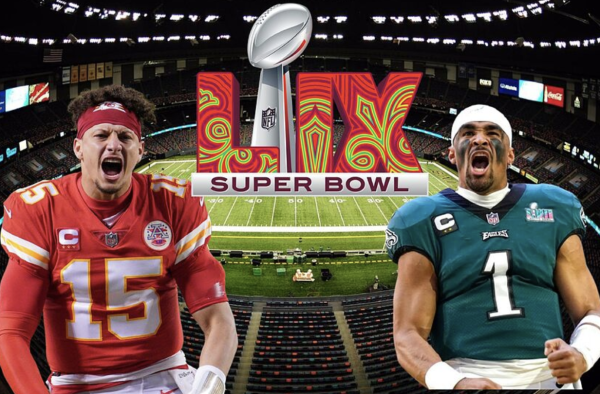From physics to medicine: A look into sports JanTerms
Each January, the Upper School partakes in JanTerm: an intensive, three-week course of study allowing Upper School students to focus on a single topic in great depth and at an accelerated pace. Out of the 46 courses offered, a few of them are specific to sports, such as Broadcast Sports Journalism, The Business of Sports, Mathematics of Fantasy Sports, Physics of Sports, and Sports Medicine.
Typically, these courses are highly sought after due to their exciting and hands-on natures. All of these courses go in-depth with various topics of the sports world, one of them being the Physics of Sports, a JanTerm exclusive to freshmen and sophomores. Physics teacher Henrik Malmberg, the faculty advisor to the course, considers why many of the Upper School students are drawn to his JanTerm.
“Physics of Sports is a course that uses physical concepts to investigate different sports,” said Malmberg. “Students will learn about force, acceleration and motion in sports. The course centers around field trips and student lead projects. This year we are going on six field trips: Sky Zone for trampolines, Andretti to Go Kart drive and bowl, P3 to learn about biomechanics,Top Golf to play golf, GSU to learn about body movement research, and iFly to indoor skydive.”
In this particular course, students not only research and examine how physics affects and plays a role in a variety of sports, but they also experience them firsthand.
“We have learned about free fall and acceleration due to gravity as well as how to use data collection and analysis programs like Logger Pro and Pasco Capstone,” said freshman Andrew Dotson. “In the weeks following, we went to Andretti’s, Top Golf, IFly, and Sky Zone. My favorite part of the course was definitely playing dodgeball at Sky Zone and comparing the difference in jump velocity between regular ground and a trampoline.”
Meanwhile, students in Sports Medicine learn about the treatment, rehabilitation, and prevention of sports-related injuries. Athletic trainer and faculty advisor Lauren Carter explains the curriculum of Sports Medicine and why many students flock to this JanTerm in particular.
“The Sports Medicine Jan Term is an encompassment of learning about the team that makes up our health care providers who help our athletes with injuries,” said Carter. “We investigate the muscular anatomy of the body and different sports related injuries that occur. Some field trips that we attended this year were to the Grady Academy where EMTs and Paramedics train to become certified. Another place we visited was the Bodies Exhibit in Atlanta, where you can really see how the soft tissues and bone really work in our bodies. Students also enjoyed visiting physicians’ offices such as Emory Orthopedic and Spine and Peachtree Orthopedics and physical therapy clinics, a chiropractor clinic, DDP yoga, and Fusion Athletics.”
Carter derives her love of sports medicine from her career as a certified athletic trainer, treating and rehabilitating athletes from a wide range of sports, from the football stadium to the training room.
“I am very passionate about my career as an athletic trainer and I love teaching others about what I do and how dynamic my job can be,” said Carter. “I am not just the person that tapes an ankle, but I need to know why were are taping and how we can prevent this injury from occurring and getting worse. I truly love getting to know the students in a different capacity then just the athletic training room.”
Many of the students enrolled in Sports Medicine participate in a variety of sports. A former athlete herself, Carter explains why Sports Medicine is very popular among the Upper Schoolers.
“I believe Sports Medicine is highly sought after because the athletic population truly want to know what is going on with their bodies and what is out there that can get them ahead of the game,” said Carter. “Some of our students are interested in medicine, and this is a great way to see the multiple aspects that you can take.”
Fellow Sports Medicine faculty adviser and gymnastics coach Sandi White explains how sports medicine bridges the gap between science and practice in the promotion of exercise and health and in the scientific assessment, a study of our understanding of sports performance.
“This course is designed for students interested in Sports Medicine here at Westminster and beyond,” said White. “Topics include the basic concepts of athletic training as a profession, human anatomy, mechanism of injury, and administration of athletic training. Students will demonstrate a basic mastery of how athletic injuries occur, how they are treated, and how they can be prevented. Students learn usable, interesting information that can be applied to their sports and their own bodies. Many of the students have or know someone who has sustained sports injuries so are able to easily relate.”
Freshman Andrew Mao was intrigued and immersed in the course.
“I have learned a lot about how to fix and treat injuries, the proper way to recover, the anatomy of the human body, and how doctors deal with life or death situations in hospitals,” said Mao. “It’s been really interesting to see how difficult it is to treat someone in a small amount of time. My favorite part has been seeing how intense doctors have to be, especially in the EMS as people are rushed in on the brink of death every minute.”
As JanTerm comes to a close, many students reflect how these past three weeks have fostered collaboration and provided venues to create, innovate, and problem solve in a variety of subjects.
“Now because of the class I am self-reliant and treat my own small injuries,” said Mao. “I’m even considering taking sports medicine in the future.”


